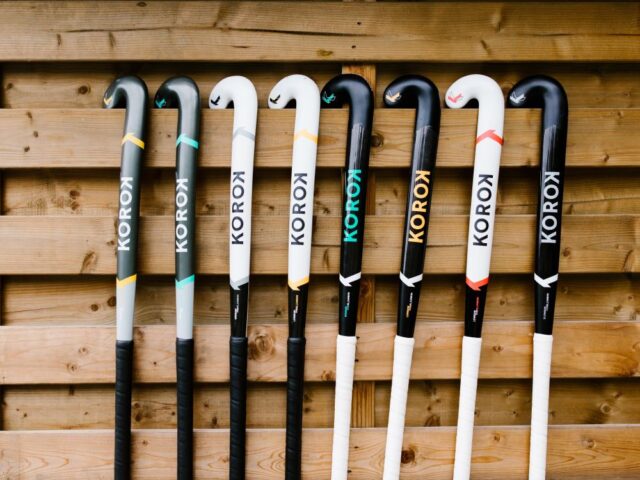
Field hockey, a captivating and dynamic sport, demands a harmonious blend of skill, agility, and precision. Like a virtuoso selecting the perfect instrument for a symphony, choosing the right field hockey stick is an art.
These field hockey sticks selections can elevate your techniques and breathe life into your performances on the field. This comprehensive exploration will explore the myriad ways the correct field hockey stick can catalyze your improvement, enhancing your skills and boosting your overall performance.
The Size Matters
The cornerstone of a well-chosen field hockey stick begins with its size. Your height and position are two pivotal factors that intricately interlace with the stick’s length to create a harmonious symphony on the field. It’s akin to a conductor selecting the right baton to direct a masterpiece.
A too-long stick may stifle your dribbling skills, limiting your maneuverability. Conversely, a stick that is too short might compromise your reach and passing precision. Defenders often gravitate toward longer sticks, as they provide them with a superior reach during tackles and intercepting passes. In contrast, forwards and midfielders frequently opt for shorter sticks, allowing them to dance through opponents with nimble agility.
However, it’s crucial to remember that personal preferences play an instrumental role in stick selection beyond the prescribed guidelines. Hence, it is vital to embark on a journey of experimentation, testing different lengths to discover the one that harmonizes perfectly with your playing style and physique.
Material Composition

Just as a composer selects various instruments to create a symphony, field hockey sticks come in different materials, each contributing unique notes to the performance. These materials include wood, carbon, fiberglass, and occasionally aramid fibers, constituting the essence of the stick’s personality and performance.
Wooden sticks, often favored by beginners, evoke a traditional and softer touch, making them an excellent choice for those taking their first steps in the game. However, they may need more power and precision required by more advanced players.
Carbon sticks, with their inherent stiffness, unleash a symphony of power, making them the virtuoso’s choice for releasing long and accurate drives. The harmony between carbon and the ball resonates in a harmonious cacophony of controlled dominance on the field.
Fiberglass, a versatile and balanced material, strikes a chord that combines power and flexibility, creating a balanced blend that appeals to a broad spectrum of players.
Some sticks also incorporate aramid fibers, weaving an element of strength and durability into the stick’s fabric. In essence, the material composition of your chosen stick is the instrumental ensemble with which you will craft your hockey symphony.
Curving Your Way to Perfection
In the realm of field hockey sticks, the bow shape defines the contours of your performance. The subtle curve defines ball handling, control, and the ability to execute deft lifts and aerial maneuvers. Like a violinist selecting the bow that resonates with their unique style, the hockey player must choose the bow shape that aligns with their technique.
With its even curvature, the Standard Bow is akin to the beginner’s sheet music. It supports fundamental skills, helping novices refine their techniques and find their rhythm on the field.
The Late Bow, positioned closer to the head of the stick, unveils the pathway to more advanced skills such as drag flicks and aerials. It’s the maestro’s baton that orchestrates intricate moves with precision.
The Mega Bow offers an even more pronounced curvature for the true virtuosos. This design is a specialized instrument tailored for drag flick specialists and those who craft intricate symphonies of penalty corner injections.
Each player’s unique technique can be refined and amplified with a different bow. Thus, the choice of bow shape is akin to a conductor selecting the precise instrument to convey their musical vision, and it significantly contributes to your mastery of the field.
Toe Design

The toe design of a field hockey stick is analogous to the fine-tuning of a musical instrument, influencing your ability to maneuver, strike, and control the ball with precision. The design of the toe is a pivotal element in crafting the individualized composition of your playing style.
The Shorti toe, with its compact and agile design, is the preferred choice of forwards, offering the skill required for quick turns and goal-scoring finesse.
The Midi toe, versatile and beloved by many, is a versatile instrument, perfect for executing swift shots and tackles, much like a versatile musician proficient in various styles.
Defenders often find solace in the Maxi toe, which provides a larger receiving area and becomes their protective shield against offensive onslaughts. It offers the surface area required for accurate clearances and robust defensive maneuvers.
With its distinctive J-shaped curve, the Hook toe augments the surface area for ball control, allowing players to craft melodies of power and precision. It’s the choice of those who seek to wield the stick like a conductor’s baton, creating symphonies of ball control.
Your playing position and your personal style guide the selection of your ideal toe design. Understanding the nuances of each toe type empowers you to refine further and compose your unique symphony on the field.
Weight and Balance Point
Your field hockey stick’s weight and balance point dictate the resonance of power and control in your performance. These elements are like the keys of a grand piano, creating the harmony that defines your gameplay.
The weight of the stick influences the magnitude of power behind your shots and your overall control of the field. Heavier sticks produce thunderous shots, akin to the deep bass notes in a musical composition, but may sacrifice agility and quick maneuverability.
Conversely, lighter sticks allow for graceful hand movements, akin to the swift and precise strokes of a pianist’s fingers on the keys, but they might lack the driving force required for powerful strikes.
Balancing the weight and choosing the right balance point is akin to an orchestra conductor fine-tuning their ensemble, ensuring that every instrument contributes to the symphony’s grandeur in perfect harmony.
Grip
The grip on your field hockey stick is the tactile connection between your hands and the instrument. It ensures not only comfort but also mastery in stick handling.
Like the texture and feel of a musical instrument’s strings, the grip profoundly influences your touch and control on the field.
The Symphony of Choices
Choosing the right field hockey stick is not a decision to be made lightly. It’s a blend of understanding your playing style, position, personal preferences, and the myriad options available in the market.
Like a maestro choosing a baton, the right stick can perfectly orchestrate your performance.












